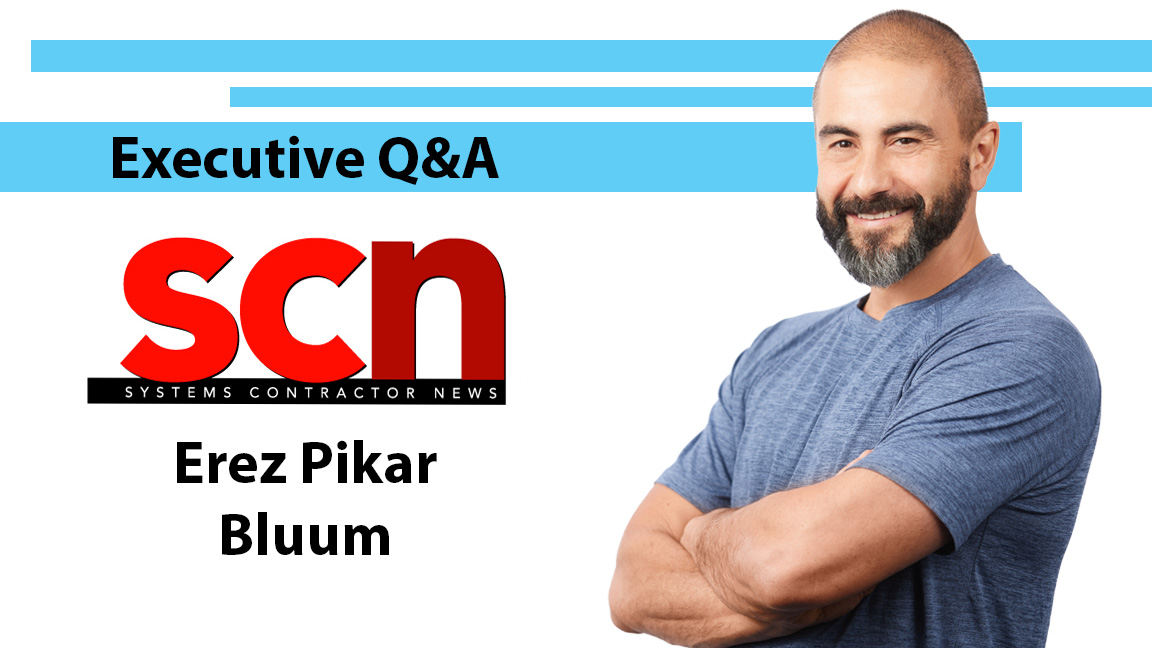Executive Q&A: Technology for Teachers
CEO Erez Pikar leads Bluum’s efforts to create equity in education.

SCN: How long have you been with this company, and what are your responsibilities?
Erez Pikar: I joined the company in 2006 when it was known as CDI Technologies, after selling a company that my brother and I built. In 2010, we were fortunate to have the opportunity to complete a management buyout, and in November 2013, we partnered with HIG. This private equity firm has supported the company through acquisitions and aggressive organic growth over the last eight years.
Early in 2018, my brother left to become an EdTech and FinTech investor, and I became the sole CEO. As the CEO, I have the privilege of building the company's long-term strategy with the board of directors. Still, I consider my most important duty to be building and directing the company's leadership group.
SCN: How has your background prepared you for your role?
EP: I have been an entrepreneur since 1993, my last year at the University of Waterloo, when I started my first technology business. It is hard to believe that it's been almost 30 years, and I suspect that I have managed to survive every possible mistake and built a reasonable body of experience over the years. It seems like we have anticipated and overcome most of the hurdles that have come our way. Having survived them has provided the calm and confidence to deal with new challenges.
SCN: After last year's merger between Trox and Tierney, why the decision to change the company name to Bluum?
While technology can provide solutions for unforeseen circumstances that arise, it is more critical to ensure technology doesn't interfere with learning in the classroom.
Erez Pikar
EP: After the significant merger of CDI Technologies and Troxell Communications under the Trox name in June 2019, Trox then merged with Tierney in April 2021. Our leadership team decided that the best way to intertwine three wonderful organizations together was to rebrand under a new name that would belong to every employee equally and align with our mission, objectives, and pursuit of continued growth. We are united under one aspirational brand and a vision of creating equity and access in education.
[AV/IT Industry Acquisitions, Reorgs & Partnerships—2022 is Off to a Quick Start]
A daily selection of the top stories for AV integrators, resellers and consultants. Sign up below.
SCN: What do you think are the biggest challenges to creating equity and access in education?
EP: Districts have varying tax bases, and states have different models for school finance, so student funding is not consistent across the board. However, beyond resource and access issues is the challenge educators face with professional development. Even if educators had access to unlimited technology, if they cannot incorporate that technology into their classrooms, its benefits will go unrealized. Professional development implemented in a financially strategic and targeted manner will ensure that teachers comfortable with technology remain on the cutting edge. In contrast, teachers who struggle must receive additional training to be brought up to speed, but IT support in schools is proportionately underfunded compared to the corporate world.
SCN: Are educators becoming more comfortable with technology?
EP: Teachers who consistently receive support from their leaders are quite comfortable with technology. In fact, they embrace it. Confidence is fostered by trust. The teachers who trust that their evaluations will reflect their level of training thrive, while teachers who don't undergo training or develop consistency and continuity in their classrooms experience discomfort. Our professional development group at Bluum is filled with former educators who assist with this issue.
[Executive Q&A: Choose Your AV Path]
SCN: Where do you see the Pro AV industry heading in the education market?
EP: The pandemic was a wake-up call for the education community, but it was also an opportunity for the AV industry to provide solutions. Fortunately, we were positioned to benefit from being prepared when COVID-19 struck. Whether it is a virus-inspired pandemic, potential catastrophe, or just new methods of learning, education cannot be rigid, and must adapt to remote, hybrid, and other interactive modes of learning. We saw a tremendous amount of new technology added at an accelerated pace into classrooms in the last two years, but we also saw a heightened attention toward teaching occur. While technology can provide solutions for unforeseen circumstances that arise, it is more critical to ensure technology doesn't interfere with learning in the classroom.
[Executive Q&A: Improving Hybrid Learning Audio]
SCN: Can you tell us more about your upcoming eCommerce site and Bluum Technology?
EP: The eCommerce site is just an improved way for customers to research products and solutions that simplify their lives. It will debut this spring. Regarding Bluum Technology, we have another valued sector of the business that targets our corporate and government customers. Although most of our customer base is in education, when we rebranded to Bluum for our education customers, we also rebranded to Bluum Technology for the existing non-education verticals.
SCN: What other new initiatives are we likely to see from your company?
EP: There are some exciting new developments at Bluum, such as expanding into cybersecurity, networking, and physical security. In addition, we have bolstered our Education Services Team, adding a grant writer and other education experts to assist schools with making technology integration into the classroom easier. The work we’re doing with cybersecurity and education services is particularly compelling right now.

Mark J. Pescatore, Ph.D., has been the content director of Systems Contractor News since 2021. During his career, he's hosted and programmed two ongoing regional industry trade shows (including Future B2B's AV/IT Summit), produced and hosted podcasts and webinars focused on the professional video marketplace, taught more than a dozen college communication courses, co-authored the book Working with HDV, and co-edited two editions of The Guide to Digital Television.
